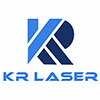How to use Q-switched lasers.
Q-switched lasers are non-invasive lasers that generate high-intensity pulsed light beams. A pulse in a Q-switched laser beam lasts only a billionth of a second.
Q-switched lasers are a type of laser that is commonly used in medical and cosmetic treatments, such as tattoo removal and skin rejuvenation. Here are the general steps on how to use Q-switched lasers:
- Identify the area to be treated: The first step is to identify the area of the body that needs to be treated. This can involve examining the patient’s skin and discussing their goals and expectations for treatment.
- Prepare the skin: Before using the Q-switched laser, it is important to prepare the skin by cleaning it thoroughly and removing any lotions, makeup, or other substances. This helps to ensure that the laser can penetrate the skin and target the pigment effectively.
- Adjust the laser settings: Once the skin is ready, adjust the Q-switched laser settings according to the patient’s skin type, the area being treated, and the pigment level of the tattoo or lesion. This involves setting the wavelength, pulse duration, energy level, and spot size of the laser.
- Apply the laser: Using the handheld laser device, apply the laser light to the targeted area in a precise and controlled manner. The laser energy penetrates the skin and breaks up the pigment, which is then cleared away by the body’s immune system.
- Monitor and adjust as needed: Throughout the treatment process, monitor the patient’s skin for any signs of discomfort, burning, or other adverse reactions. Adjust the laser settings as needed to ensure the most effective and safe treatment possible.
- Post-treatment care: After the Q-switched laser treatment, provide the patient with instructions on how to care for their skin and minimize any potential side effects such as redness, swelling, or blistering. Encourage them to avoid sun exposure and apply sunscreen regularly to protect the treated area.
Q-switched lasers are a safe and effective tool for various medical and cosmetic purposes when used by trained professionals. By following these steps, you can ensure optimal results and a positive patient experience.
Product Category
| ( ! ) Fatal error: Uncaught Error: Call to undefined function my_nav_menu() in /usr/local/openresty/nginx/html/laserkr/wp-content/themes/theme/sidebar.php on line 15 | ||||
|---|---|---|---|---|
| ( ! ) Error: Call to undefined function my_nav_menu() in /usr/local/openresty/nginx/html/laserkr/wp-content/themes/theme/sidebar.php on line 15 | ||||
| Call Stack | ||||
| # | Time | Memory | Function | Location |
| 1 | 0.0096 | 787368 | {main}( ) | .../index.php:0 |
| 2 | 0.0097 | 788792 | require( '/usr/local/openresty/nginx/html/laserkr/wp-blog-header.php ) | .../index.php:17 |
| 3 | 0.5341 | 56325592 | require_once( '/usr/local/openresty/nginx/html/laserkr/wp-includes/template-loader.php ) | .../wp-blog-header.php:19 |
| 4 | 0.5357 | 56336672 | include( '/usr/local/openresty/nginx/html/laserkr/wp-content/themes/theme/single.php ) | .../template-loader.php:106 |
| 5 | 0.6148 | 57570176 | get_sidebar( $name = ???, $args = ??? ) | .../single.php:25 |
| 6 | 0.6148 | 57570552 | locate_template( $template_names = [0 => 'sidebar.php'], $load = TRUE, $load_once = TRUE, $args = [] ) | .../general-template.php:136 |
| 7 | 0.6148 | 57570664 | load_template( $_template_file = '/usr/local/openresty/nginx/html/laserkr/wp-content/themes/theme/sidebar.php', $load_once = TRUE, $args = [] ) | .../template.php:745 |
| 8 | 0.6150 | 57574608 | require_once( '/usr/local/openresty/nginx/html/laserkr/wp-content/themes/theme/sidebar.php ) | .../template.php:810 |
